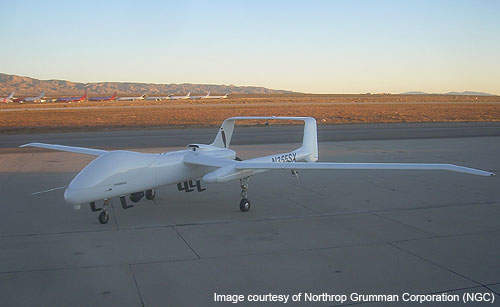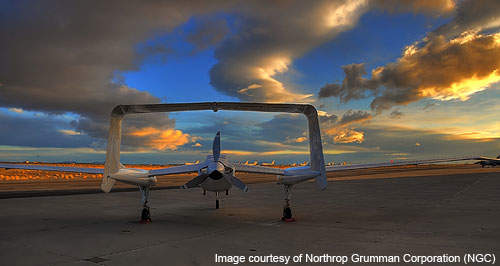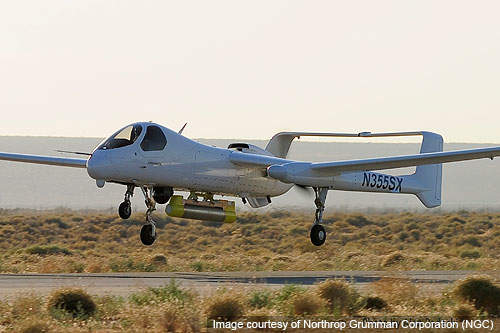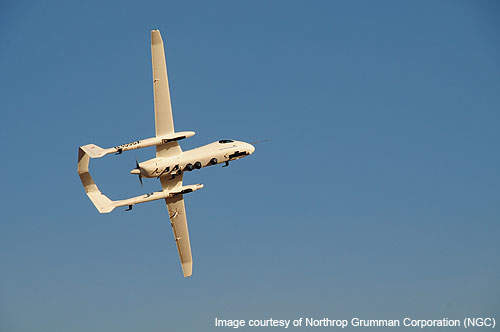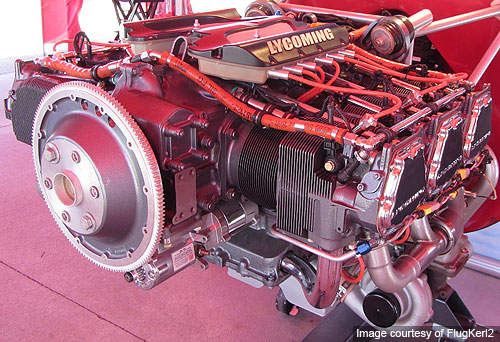Firebird is a medium altitude and long endurance manned or unmanned aerial vehicle designed and manufactured by US-based company Northrop Grumman Corporation (NGC) for the US Defence Forces. The optionally piloted vehicle (OPV) works as an intelligence gathering system and can execute intelligence, surveillance and reconnaissance (ISR) missions.
Flying at a maximum altitude of 9,100m, the Firebird can render its operators with real time high definition videos, infra-red imagery and electronic message listening capability by carrying out surveillance and reconnaissance operations over large areas.
Firebird was first unveiled to the public in May 2011 at Empire Challenge 2011, a military exercise conducted by the US Joint Forces Command in Fort Huachuca, Arizona.
Design of the Firebird UAV
The Firebird is designed to carry out both military and commercial operations. It is flexibly designed to suit manned or unmanned operations and can be easily modified for the two flight modes.
It is incorporated with plug and play elements and can operate both day and night even in harsh environments.
Development of the Firebird manned or unmanned aerial vehicle
The idea to build the OPV was first floated by Rick Brooks in February 2009 upon contacting Scaled Composites, a subsidiary of Northrop Grumman Corporation.
The development of the OPV named Firebird is being carried out in San Diego, US.
The maiden flight of the vehicle took place in February 2010. Scaled Composites is the prime contractor involved in designing, building and flight testing the aircraft shell.
Features of the aircraft
The vehicle will feature a slender wing spanning 19.8m, a large internal payload bay, a three-bladed pusher propeller in the rear side of its fuselage and eavesdropping gear. High resolution electro-optic camera will be installed underneath the front fuselage to capture real time videos or infra-red imagery.
The aircraft can accommodate four modules of spy equipment and communication payloads simultaneously through a universal interface. It will incorporate modern technologies to minimise cost and maximise efficiency.
Navigation
The Firebird can be controlled either manually from the ground control station or by a pilot on-board. It is integrated with an automatic launch and recovery system which assists in automatised safe landing when communication errors occur within the control station.
Weapons
The Firebird features one hardpoint on each wing to launch air to ground missiles despite not having been tested for weapons incorporation.
Sensors
The Firebird will be equipped with three high definition Star SAFIRE 380 electro-optical or infra-red sensors supplied by FLIR Systems. The SAFIRE 380 is a 15-inch durable turret which commands eight payloads simultaneously.
The vehicle will also be incorporated with communication signals intelligence system 1500 (CGIS- 1500) and electronic support measures. The sensors to be installed in the vehicle can be controlled through the GCS and remote terminals.
Radar technology
The vehicle will be fitted with synthetic aperture radar, laser designator and laser range finder.
Engine, power and propulsion
The Firebird is powered by a single Lycoming TEO-540 engine rated at 360hp (261kW) of output power. The TEO-540 is a twin-turbocharged and intercooled engine integrated with state-of-the-art electronics and sensors making it compatible to operate in any environment. It is designed and manufactured by Lycoming Engines, a Textron Company.
Ground control station
The ground control station (GCS) is designed and manufactured by NGC to process, retrieve, store, monitor and display the real time infra-red imagery or videos transmitted by the vehicle’s payload cameras.
Communications between the vehicle and control station will be enabled through a line of sight communication data link.
The data captured by the aircraft will be placed into a single tool at the control station, which allows users to access the data for making piloting decisions.
The Firebird can fly at a maximum speed of 370km/h. The endurance of the aircraft is 24 to 40 hours.
The Global Unmanned Aerial Vehicles (UAV) Market 2011-2021
This project forms part of our recent analysis and forecasts of the global Unmanned Aerial Vehicles (UAV) market available from our business information platform Strategic Defence Intelligence. For more information click here or contact us: EMEA: +44 20 7936 6783; Americas: +1 415 439 4914; Asia Pacific: +61 2 9947 9709 or via email.

